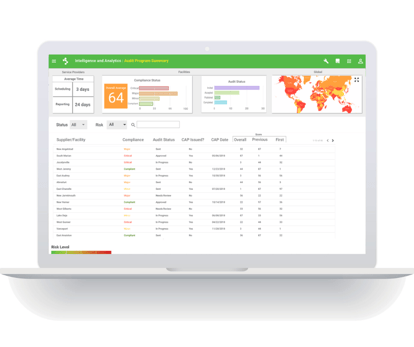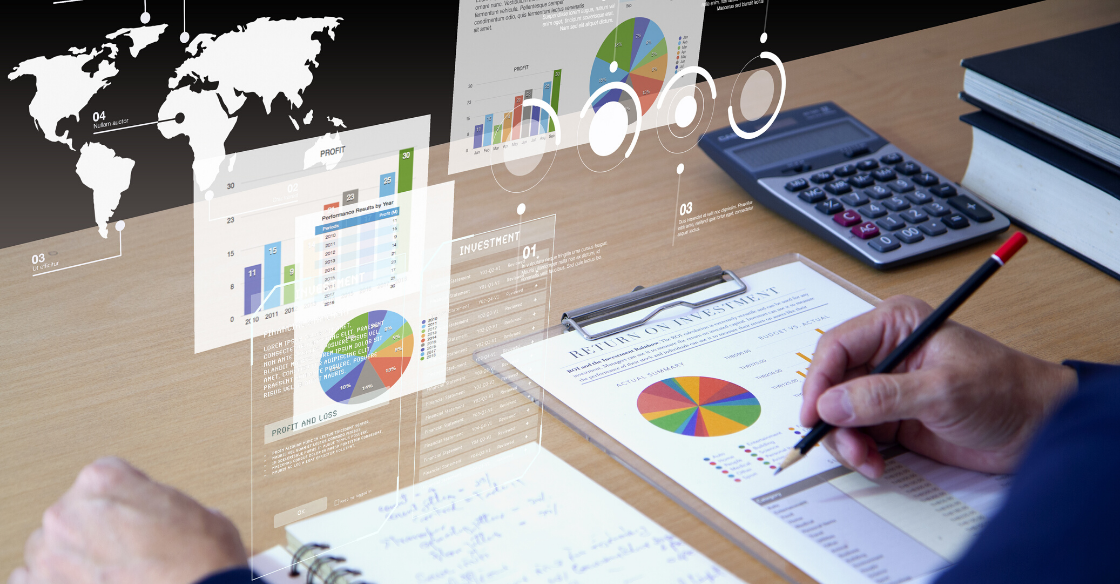How to Conduct a Supplier Audit While Practicing Social Distancing
Various events can disrupt your supply chain, though they are often isolated or at least geographically contained. Never have we seen such global and brutal disturbance as we are experiencing with the coronavirus pandemic. In what seems like the blink of an eye, entire cities enter lockdown, countries adopt confinement measures, movement is restricted, and in some cases, quarantine is imposed on visitors at ports of entry.
With this disruption, businesses across the globe have been overcoming new challenges in their supply chain and addressing key issues in innovative ways. How can we simultaneously navigate the uncharted territory of major shifts in supply and demand, react promptly but wisely to minimize long-term losses, keep the standards of corporate social responsibility and meet compliance requirements, all while practicing the principle of social distancing?
In this exceptional context, conducting a supplier audit per traditional processes is not possible. Even if traveling (internationally and domestically) was conceivable, the logistics would prove challenging: security, protection, access, and risk represent significant obstacles to performing a thorough and accurate assessment.
If COVID-19 teaches us anything, it is that organizations have little choice but to turn to technology to keep functioning without being blinded by lack of data and inability to factor in risk in real-time. Today, more than ever, transparency is a priority. Let’s take a look at how you can conduct successful supplier audits without leaving your (at home) desk.
The Steps of Supplier Audits
The objectives of supplier audits are not limited to reaching regulatory compliance. As more and more organizations implement CSR initiatives, either proactively or as a response to the pressure of consumers and media, transparency, traceability, and accountability are taking center stage in monitoring the health of supply chains. This can include:
-
- Social and ethical concerns
- Sustainable sourcing practices
- Safety requirements
- Quality standards
- Environmental safeguards
To a certain extent, corporations rely mostly on field audits to cover the scope of suppliers’ compliance (either agency-imposed or self-imposed). The process is time-consuming and extremely costly. The steps of a supplier audit usually include:
1. Supplier Documentation
The first step of a supplier audit involves gathering all information and documenting suppliers’ profiles: location, geo-risk score, contracts, delivery specifications, complaints, etc.
Multiplying the task by the number of suppliers is a major resource pit, often leading to human error, insufficient or inaccurate data, missed deadlines and suppliers falling through cracks. Often, the supplier response rate to data requests is low and can be difficult to procure on a tight deadline without the help of specialized compliance software and engagement.
2. Audit Checklist
Supplier assessment checklists vary from business to business, but the industry standards includes the state of facilities and equipment, work conditions, quality management, reliability, sourcing, and risk management strategies.
3. Audit Execution
In traditional audits, companies typically send auditors to the site to physically inspect and conduct interviews and check items off the list. This implies dedicating budgets to travel expenses, managing and organizing local support, including securing authorizations or translators. This step may not be possible to conduct in the traditional way during social distancing and shelter at home orders.
4. Audit Follow-up
Ongoing communication between companies and multiple tiers of the supply chain ensures problem areas are identified in a timely manner and that an adequate remediation plan is in place and executed.
For most organizations, the number of suppliers is too great and too spread out to efficiently implement a field audit task force. For some, suppliers by the thousands are involved. A popular option is to hire 3rd party auditors who then work under time pressure with the less-than-optimized processes it implies, but it has not proved to be the best option. According to a brief by the University of Sheffield, UK,
“[Traditional] audits are ineffective tools for detecting, reporting, or correcting environmental and labour problems in supply chains. They reinforce existing business models and preserve the global production status quo.”
In other words, the efforts of supplier audits to better the world are not paying off as one might expect.
Even though government agencies have multiplied legislative compliance programs to try and correct the most pressing matters (conflict minerals, mica mining, restricted substances), auditing suppliers is still hindered by many obstacles, the latest of which are travel restrictions and social distancing.
Conducting Virtual Audits
For the sake of prevention, working from home has become the norm. Virtual reality has taken over offices. In view of so many companies still able to run their operations without the need to be physically present in one location, the notion of remote supplier audits does not seem out of the ordinary.
Benefits of Virtual Supplier Audits
Virtual audits, such as the Desktop Audit program offered by Source Intelligence, allow you to maintain a handle on all suppliers while engaging minimal resources. A 100% electronic supplier audit solution means you can keep data on your supply chain partners in a centralized location as well as a variety of other benefits such as:
-
- Increasing transparency thanks to real-time updates on high-risk areas. This also ensures you can promptly deploy risk management strategies should the data dramatically and rapidly change in locations where you have a high concentration of suppliers.
- Easily collaborating, sharing, and communicating with your teams and suppliers. Exchanging information in a digital environment streamlines the processes and increases supplier engagement. By relieving them of the burden of self-assessment, you demonstrate your willingness to support them while obtaining honest and accurate information.
- Prioritizing risk in your suppliers more efficiently. Field audits have limitations when it comes to risk assessment. Many factors may not be directly and physically accessible. Digitalization allows critical data to land on your platform at high velocity.
- Reaping significant savings. The direct and indirect costs associated with physical site audits are quite high for results you cannot measure with the greatest degree of certainty. By freeing human and financial resources, you can save a lot of critical funds in a time where every penny counts.
- Ending the need for boots-on-the-ground facility audits. Should you still feel the need for human conversation, or wish to discuss assessment conclusions with your suppliers, you can easily organize video conference calls, so no stone is left unturned.
- Combining audit data with other supplier compliance data. Keeping your Audit data in the same place as the rest of your supplier data means that you can get a complete picture of supplier performance for the first time.
Source Intelligence Supplier Desktop Audit
Even though social distancing is a temporary normal businesses must acclimate to, the benefits of adopting virtual supplier audits ring true far after COVID-19 is a concern.
Source Intelligence has designed a comprehensive supplier audit solution to help you connect to your supply chain and improve processes so you can achieve optimal supply chain transparency.
Through AI-powered data collection and consolidation, supplier risk-factor scoring, and corrective action planning, global audit review experts and 24/7 online support, on-site audits become obsolete and technology propels you ahead of the pack. Stay safe. Stay home. We’d love to give you a (virtual) tour of our award-winning Desktop Audit platform and what it can do for you.
Stay safe. Stay home. We’d love to give you a (virtual) tour of our award-winning Desktop Audit platform and what it can do for you.



